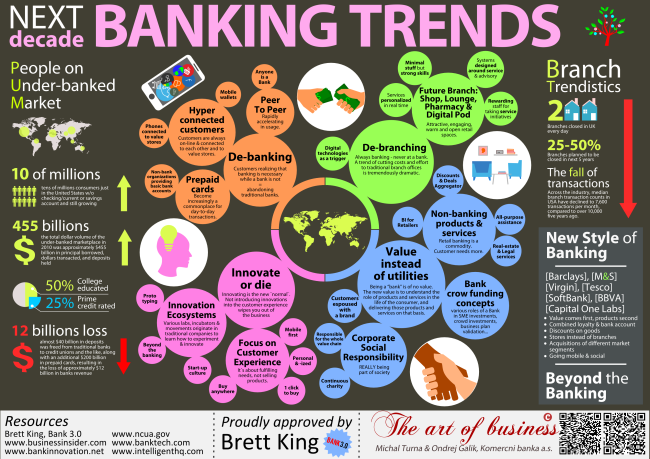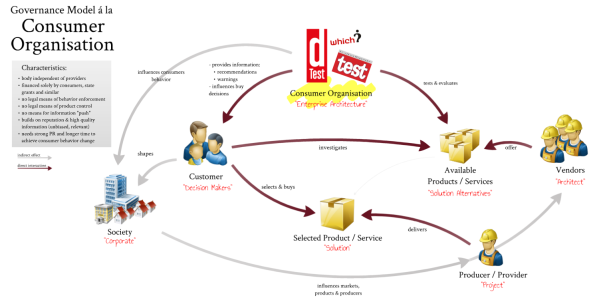Get your inspiring poster today!
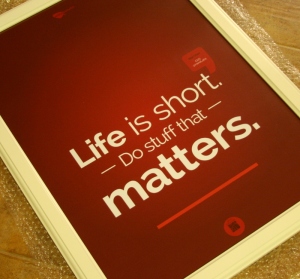 Finally I made it happen and managed to start a really really small business with two simple tasks:
Finally I made it happen and managed to start a really really small business with two simple tasks:
1. share inspiration & energize startups,
2. kick ass of rustic corporate cultures.
So here it comes, enlighten your walls with beautifull vibrant posters with quotes from famous entrepreneurs and thought leaders. Hope you enjoy it!
Visit www.mindrenalin.com
Trends in banking for the next decade
It seems that the wind of change is blowing on banks as well. As boring as it might seem, there are deffinitely disruptive innovations and trends going to shape banking business in the next decade. With great insights from Brett King we put together an infographics we are using at our bank to drive a business and IT transformation. Check it out and share your view!
Futile Communication – Road to Perdition
 Communication matters. A lot. Reading and thinking about storytelling lately I am starting to recognize a bit more some of the communication patterns. And those futile ones seem more obvious to me now. A particular one that struck me the most lately could be called “I know you must change” (personally calling it “dumb suicide”).
Communication matters. A lot. Reading and thinking about storytelling lately I am starting to recognize a bit more some of the communication patterns. And those futile ones seem more obvious to me now. A particular one that struck me the most lately could be called “I know you must change” (personally calling it “dumb suicide”).
“I know you must change”
The pattern is quite simple and I bet most of you have experienced it already. The hero (failed hero, as a matter of fact) of this story is quite a smart person. He happened to recognize tons of issues & problems, scrutinized them, found few root causes and came up with a solution. The solution means a change – as it always does. He knows things need to change. He’s the one that sees, understands and thinks others will see it and understand it the same way. So he comes and challenges his peers with his wisdom telling them to bite the bullet. Peers unite in defense, challenge the wisdom, challenge the facts, or – brutally simply – they just disagree. Their defense shifts to offense and the hero is forced to defend his position, dignity, ego, and fight back with ‘yeah but’s. There’s no winning for the hero in this story, sorry, that’s life. The hero is defeated.
Ok, perhaps frustration makes me say too much about a trivial and obvious fact that the way you set the scene for any discussion is in your hands, so don’t screw it up by “shooting yourself in the knee” with a losing strategy. It’s also good to remember that there’s ALWAYS another perspective on the matter.
EA & Marketing Fusion – Experience
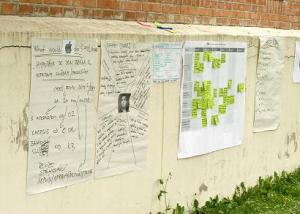 Few days ago I dropped a note about my excitement about an upcoming workshop with marketing at my bank and I thought that someone might be interested in how the workshop looked like and how it went (I don’t think there’s anything secret about that but concrete outcomes). So this is a bit of my experience.
Few days ago I dropped a note about my excitement about an upcoming workshop with marketing at my bank and I thought that someone might be interested in how the workshop looked like and how it went (I don’t think there’s anything secret about that but concrete outcomes). So this is a bit of my experience.
There were few goals for the workshop, namely:
- Bring awareness of what’s “customer journey” and “customer experience” to retail marketing people
- Bring awareness of importance of emotions in decision making (generally and why that matters considering customers)
- Make people think outside the box, “think different”, look for potential for innovation from customer perspective
- Motivate people after some reorganization and some lay-offs
- Team building of the new team
- Strengthen business & EA collaboration
Generally I consider the workshop to be successful (but as always there’s room for improvement:) Nevertheless, the location was great – outdoor in the city park was a good location and few bypassers even dared to come close and see details of our work. Weather was unfortunately not all that great, the forecast lied a bit and we had few cold showers and no sight of sun all day long. Picnic style gave it a touch of an easy-going happening and I think people were quite relaxed and open.
From the content point of view we have managed to do the following:
- Introduction to the purpose of the workshop, some history, why we are here, why we discuss terms customer journey & customer experience
- Ice breaking session – how emotions influence decision making in practice, supported by few games to see that even though people knew the trick, they felt into the trap of emotional decisions. We showed some winning commercials and showed how emotions worked there. This was really relaxing and quite fun, a lot of discussion went into our own campaigns and whether the bank is successful because or despite them.
- Personal experience – to show that emotions work we collected few words like contract, customer care, delight, payment etc and asked people to think of their experience both positive and negative with other businesses and share them with the group. Not surprisingly there was always a significant emotional footprint in every story and this was the first step for people to open up and think outside the bank.
- Creating persona – Then we jumped into the real work and each group created their persona for the next steps.
- Customer journey map –we introduced different customer viewpoints (actions, feelings, thoughts, expectations, obstacles…) and various phases of the customer journey. This tool took bit longer to get digested as there were probably too many new dimensions for people to consider. But working through this on their own they eventually got it quite well. Through a mortgage example we showed were (unlike bank’s processes) the journey starts and where it ends (for the bank it’s basically by signing contract = customer acquired). This part was focused only on capturing the customer’s story, pain points (“I don’t understand the contract”), environment (“real estate agent pushes me to decide by tomorrow”), no solutions. I have myself a handful of theseJ
- Innovation phase – again through examples and stories we set the playground for innovation taking into consideration findings from the journey. Despite lot of introduction stories that should show dimensions in which a business can innovate this didn’t generate that many new or different ideas. Here I need another game, like the next one to drive it better. Also, people were bit tired already.
- “What would Apple do” – this helped and was fun for people. They were supposed to think of what would another company do should it enter banking business. I took three iconic companies and handed out to the groups, explained their key characteristics, values, mentioned some stories from their business and let people play.
- Cover story – With all the ideas groups were supposed to pick one they would like to see on the cover of a magazine as a success story and develop how the magazine would look like (usual “Cover story” game).
- “Day D” – Finally, we constituted a board of venture capitalists and let each group to sell us their idea in 5 minutes. We challenged their ideas, ROIs and had fun.
Feedback from the team was very positive and was around 9 in average on scale 1-10. The feedback was supposed to reflect on usefulness & effectiveness of the workshop only, not the fact that it was outside, which is in general more fun.
EA & Marketing Fusion
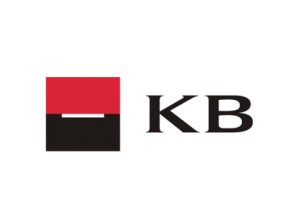 This is just a quickie to share my excitement that just a very crazy idea at the beginning becomes reality tomorrow.
This is just a quickie to share my excitement that just a very crazy idea at the beginning becomes reality tomorrow.
In just one day EA will fully organize and drive a whole day off-site workshop (picnic style;) ) for marketing [retail] people with the goal of understanding customer perspective via customer journeys, map customer experience and explore potential for innovation outside the usual boundaries. This all through gamestorming, story telling and touch of design thinking… and of course with a lot of passion. I hope for an interesting outcomes, but even without that, it’s at least the first step to a huge mindset shift from bank’s view of the customer to customer’s view of the bank. And a huge step to understand EA as much more than just IT architecture.
Thanks goes to the head of retail marketing for open mind and courage to take his people and do something so unusual for our culture. Thanks to all the smart people out there that are an incredible source of inspiration.
Wish us luck and should you be interested, follow the progress live on @OndrejGalik starting on Wednesday 9:00 CET.
No Change is Also A Course of Action
 When we first defined our EA mission in my former job in usual terms of “change”, we were immediately confronted with counter argument that sometimes the best option is to do nothing. Oh well, right, we kind of thought of that implicitly.
When we first defined our EA mission in my former job in usual terms of “change”, we were immediately confronted with counter argument that sometimes the best option is to do nothing. Oh well, right, we kind of thought of that implicitly.
This came to my mind again months later. One of the problems in enterprise architecture is kind of an inherent urge to see or look for problems in the current situation and strong conviction that a change is needed. Well… Sometimes the best course of action is no changeJ Or in other words, what we see as a problem might not be a problem at all, it might even be a desired state (however you might disagree with that).
So in order to justify that the current state is actually problematic and leads to future that’s not accepted by the stakeholders I started to put something I call for now “default scenario” in all discussions and assessments. Default scenario is nothing more than the characteristics of the current state and expected future trajectory/consequences.
This seems really trivial, but the effect is not all that small. First of all, accepting the current state as a valid option for the company makes stakeholders more open for discussion (because otherwise when you point out to problems they are pretty often ready to advocate or explain the reasons and more in defense style even though they might not like the situation themselves). Second of all, it makes the situation transparent, so it can be discussed and explicitly compared to change options. And third of all, the kicker: should there be no decision for any change, it’s in fact a decision to stay on the current track with all the consequences. This gives you all new dimension in argumentations.
It’s really important to note that I am talking about characteristics of the state – as objective as possible description of how the “things” look like and behave. It’s not judging, so watch out for putting your preference or negative undertone to what you write or say. It’s up to your stakeholders to tell you whether it’s desired (with all the consequences) or problematic and should be tackled.
In some cases, however, when there’s significant fear of transparency (because it would point out problems or might cause risk of losing turfs), this can be quite tricky. This might not fit for that sort of culture or environment.
Enterprise Architecture as a Consumer Advocacy Organisation
 This is yet another analogy I used with my management which seems to ring the bell at my organization so I thought I could share.
This is yet another analogy I used with my management which seems to ring the bell at my organization so I thought I could share.
A bit of a background story first. Since I joined the company I am promoting the value of information and putting EA as a discipline capable of getting and providing relevant, unbiased and timely information for decision makers. Specifically, information about what consequences and options there are when changing a piece of an enterprise. (Here I am more general because I include Business Architecture under the EA umbrella as well).
The Analogy
I am trying to explain the role of EA in this case on an analogy of a consumer advocacy organization such as “which?”, “Stiftung Warentest”, “dTest” and similar. The story goes like this and it’s a real story from Czech Republic:
Just recently dTest assessed selected ketchup products on the market, from well-known brands to “cheap” brand products of store chains. Surprise surprise, it became obvious that some of them met tomatoes only from a distance, some contain quite some artificial ingredients or even pieces of small living nature. Now, dTest has neither the authority to ban these products nor it can in any way forbid customers to buy them. Nevertheless, the power of information and transparency leads to a change anyway. First of all, customers realized what they were eating and changed their brand preference or even their habits [I’ve got concrete names here]. Second of all, chain stores such as Billa or Tesco and others reacted as well, either by dismissing the product from their offering since ‘it’s not aligned with the quality level the company want’s to offer their customers”, or simply by not calling it ketchup, but a tomato-based sauce instead [you guess who’s who].
I am trying to build up EA function at my organization in a very similar sense. EA provides information to decision makers on investments. Once it’s practically proven that the information is actually useful and it helps to make sense of the possible solutions, decision makers will start seeking the information. Once there’s demand for the information, EA function has much easier job putting methods & tools in place to get the information (this is in fact another part of the story not captured by the analogy and I’ll focus on it in another post). Without enforcement or authority. Later on even projects get on board and will request EA assistance so they can build solutions that have an easy way through decision-making bodies within projects.
And here is just a small sketch to underline the story.
Note: There are different funding models for consumer advocacy organisations. The one I mentioned is not funded by ads and hence is considered unbiased. This might not be the case with the rest.
Help Wanted: Inspiration for an Engaging Workshop?
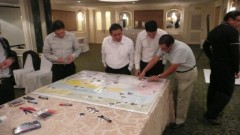 It happened this day that I got a chance to conduct a workshop with business with the goal to clarify business strategy & needs to the level which helps us to define a target architecture (for now whatever a target architecture means). Put it simply, I expect a discussion about business strategy & needs, asking questions and trying to understand what characteristics a target architecture should have (for sure to be flexible and cheap, no question about that).
It happened this day that I got a chance to conduct a workshop with business with the goal to clarify business strategy & needs to the level which helps us to define a target architecture (for now whatever a target architecture means). Put it simply, I expect a discussion about business strategy & needs, asking questions and trying to understand what characteristics a target architecture should have (for sure to be flexible and cheap, no question about that).
Now, the environment I am in is quite challenging, not always with a positive attitude among stakeholders or in general to the need of defining a target – let it be a certain future state or at least a direction – to this kind of discussion (“Read the strategy thoroughly and you’ll know what we need, stop bothering us” [over-exaggerating a bit here, just for illustration]). Yet I am not that skeptical though, so I am looking now for any inspiration that could help me lead such a strategic workshop with business that would exhibit the following:
- Is really engaging for business representatives. Here I mean that they are willing to stand up, move, show interest, take a pen, sketch, discuss, think, creatively counter-argue… to literally participate and with positive attitude.
- Creates “safe”, friendly and open atmosphere to express opinions and thoughts
- Enables wider audience to take part – so we overcome the need for later alignment among core team members
- Leaves the feeling that the workshop was useful, inspiring, perhaps even with a momentum for change, leaves a sort of emotional footprint that something was special and increases chances for commitment to further actions
More concretely, I am looking for ideas and inspiration on how to organize such a workshop, which “tools” to bring, how to moderate it, which ground rules to set and how to motivate certain collaborative attitude, perhaps a creative way of capturing stories, ideas (I assume business will talk more in terms of examples, experience or similar).
Anybody out there with a hands on experience willing to share few thoughts? (A piece of magic would do too!)
“Toilet in the Kitchen” Analogy
Just recently we managed to define guiding principles for managing development of corporate architecture. For one of them we found an analogy that not only beautifully links architecture issues to real life experience, but that actually sticks in mind so well that people are actively using it (not only architects!) so I thought I would share.
The underlying principle is boringly uninteresting “Separation of Concerns”, in my naive language saying “Put things where they logically belong” – you know, addressing the kind of discussions you have when you insist on implementing certain functionality or placing data in a concrete application simply because it’s just logical. Without going into the formal definition of the principle, we are just saying “Please, be so kind and use your BPMS to implement your processes, client related functionality mostly does belong to the CRM and when talking about the CRM, no it’s not the place for your mortgage simulation just because you’ve got full client profile there (by that logic you would end up with just one system anyway:)”.
At last, the reasoning analogy says
“I guess you don’t have a toilet in the kitchen either, eventhough there’s drain and water”.
“Sweet Tax” on Bad Architecture
 Recently I read an article about various implementations of the “Sweet”, “Fat”, “High Calorie” taxes in different countries. The story of the tax stroke me as quite a good analogy to what I am currently trying to tackle. So let’s have a look on how I perceived the problem and the solution.
Recently I read an article about various implementations of the “Sweet”, “Fat”, “High Calorie” taxes in different countries. The story of the tax stroke me as quite a good analogy to what I am currently trying to tackle. So let’s have a look on how I perceived the problem and the solution.
The problem:
High obesity rate
versus
High cost / Slow time-2-market
Problem characteristics:
- Complex problem (“in which the relationship between cause and effect can only be perceived in retrospect, but not in advance, the approach is to Probe – Sense – Respond and we can sense emergent practice” [Cinefin])
- Only long-term effects, difficult justification of corrective measures
- Lot of arguments for and against cause & effect relations
Tax solution characteristics:
- Taxation of one or more generally accepted sources of weight/health problems, such as single ingredients, nutrients (saturated fat, sugar…) or whole products (sugary drinks, candies)
- Mostly flat application (with exceptions for baby products, medical products etc.)
- Unlike e.g. alcohol/tobacco taxes, in this case some reasonable consumption of the nutrients in the matter is essential
- Expected effect is two-sided:
- Prevention effect that should demotivate high consumption by increasing price
- Raising budget for funding prevention, medical expenses and so on
Has anybody ever tried to “tax” bad architecture? I’ve played around the concept of a technical debt and this might be a solution to paying off such a debt. The way I am thinking about it is following:
- Define set of ground architecture principles to avoid big “No”s in architecture, and agree to them with all involved stakeholders. At this level the principles are rather quite high-level to be understandable to wide audience, like “No duplication”.
- Measure compliance to the principles on projects, report information to decision makers for consideration, track deviations and display consequences
- Should the decision-making behavior stay the same (quick wins, dirty solutions, i.e. “eating a lot of sugary food”), introduce a tax (“Dirt tax” or “Quickie tax”:) on breaking principles to fund re-engineering later on. This would again have to be agreed with top executives and the prerequisite also is that principles are taken seriously, there is already gained trust and respect of the provided information and wide acceptance of cause & effect relation.
Standing at the beginning – defining principles & getting buy in across the company & setting up related governance/assurance mechanisms – I am looking for insights what might be behind the horizon of what I can see right now. Anybody any experience, different (working) approach?
